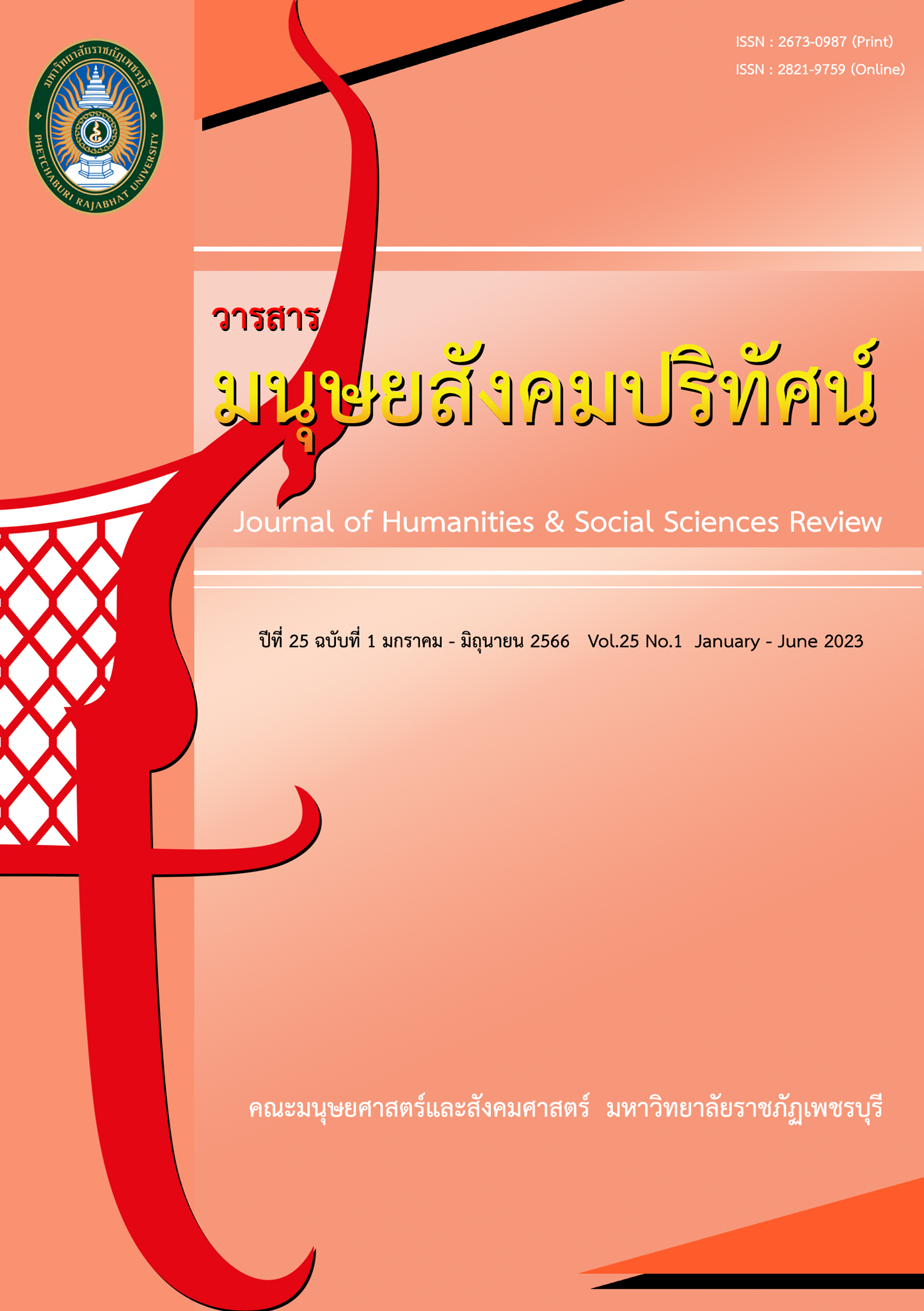Value in the Literary Translation Work of Her Royal Highness Princess Maha Chakri Sirindhorn Entitled Smiles and Tears of the Heart
Main Article Content
Abstract
This study of value in the literary translation work written by Her Royal Highness Princess Maha Chakri Sirindhorn entitled Smiles and Tears of the Heart has the purpose to determine the notable literary elements in terms of plot, theme or idea, settings, characters, and dialogues. These main components assisted readers to dig into Chinese social context and culture. Additionally, this translated literary work of the princess has reflected different forms of love; including love and mercy of mankind, love and gratefulness to parents, love and kindness to animals, profound and complicated love, and honest love and love betray. These loves are exhibited through various ways; such as thoughts, rhetoric, actions, dialogues, and settings. Readers can perceive the common point hidden in the story that love has both happiness and sadness, but it makes life worthwhile, meaningful, and powerful for people to encounter the world with hope. The four folds of story in this royal literary are simple and uncomplicated, but they have the charm and power of authorship, allowing the readers to understand the story while learning Chinese culture with pleasure. These features illustrate the elegance value of Her Royal Highness Princess Maha Chakri Sirindhorn's literary translation, which allows Thai readers to learn about and comprehend Chinese literature better.
Article Details
1. Any views and comments in the article are the authors’ views. The editorial board has not to agree with those views and it is not considered as the editorial board’s responsibility. In case, there is any lawsuit about copyright infringement, it is considered as the authors’ sole responsibility.
2. The article copyright belonging to Faculty of Humanities and Social Sciences, Phetchaburi Rajabhat University are copyrighted legally. Republication must be received direct permission from the authors and Phetchaburi Rajabhat University in written form.
References
กุหลาบ มัลลิกะมาส. (2546). วรรณคดีวิจารณ์. กรุงเทพฯ: มหาวิทยาลัยรามคำแหง.
เชษฐา จักรไชย. (2559). การสร้างสรรค์วรรณศิลป์ของนักเขียนสตรีในนวนิยายอิงพุทธศาสนา. วิทยานิพนธ์ศิลปศาสตรดุษฎีบัณฑิต มหาวิทยาลัยพะเยา.
ธัญญา สังขพันธานนท์. (2539). วรรณกรรมวิจารณ์. กรุงเทพฯ: นาคร.
ปิงซิน. (2561). รอยยิ้มและน้ำตาของหัวใจ (พิมพ์ครั้งที่ 4). สมเด็จพระเทพรัตนราชสุดาฯ สยามบรมราชกุมารี, ผู้แปล. กรุงเทพฯ: นานมีบุ๊คส์พับลิเคชั่นส์.
วนิดา บํารุงไทย. (2544). ศาสตร์และศิลป์แห่งนวนิยาย. กรุงเทพฯ: สุวีริยาสาส์น.
วิไลลักษณ์ เล็กศิริรัตน์ (2539). การอ่านเพื่อชีวิต: เอกสารคำสอนวิชา 1540203. สงขลา: ภาควิชาภาษาไทย คณะมนุษยศาสตร์และสังคมศาสตร์ สถาบันราชภัฏสงขลา.
ศิริลักษณ์ บัตรประโคน. (2559). ลักษณะร่วมและความงดงามของความเป็นหญิง ในพระราชนิพนธ์แปล สมเด็จพระเทพรัตนราชสุดาฯ สยามบรมราชกุมารี. วารสารภาษา ศาสนา และวัฒนธรรม, 5(1): 1–36. สืบค้นเมื่อ 25 พฤษภาคม 2564, จาก https://so03.tci-thaijo.org/index.php/gshskku/article/view/62412
สมพร มันตะสูตร. (2525). วรรณกรรมไทยปัจจุบัน. กรุงเทพฯ: โอเดียนสโตร์.
สุจิตรา จงสถิตย์วัฒนา. (2561). ตำนานกับข้าวคู่เสน่ห์ปลายจวักกับพิษรักจากใจ. กรุงเทพฯ: นานมีบุ๊คส์พับลิเคชั่นส์.
สุพรรณี วราทร. (2519). ประวัติการประพันธ์นวนิยายไทย. กรุงเทพฯ: เจริญวิทย์การพิมพ์.
Evans, G. (2563). องค์ประกอบของนวนิยาย ที่ผู้ประพันธ์ควรรู้. สืบค้นเมื่อ 19 กุมภาพันธ์ 2565, จาก https://www.geraldineevans.com.


